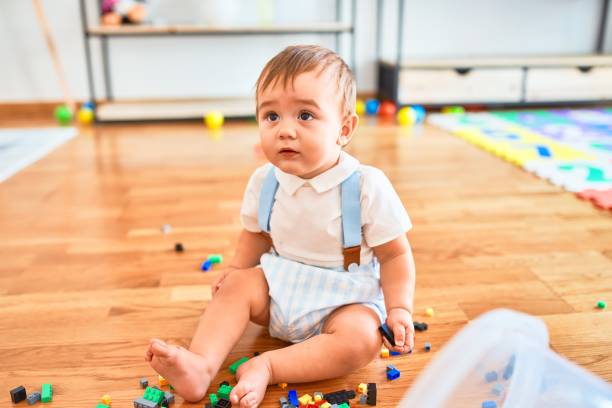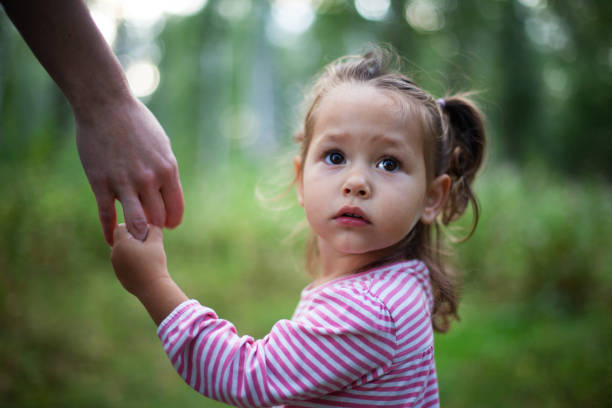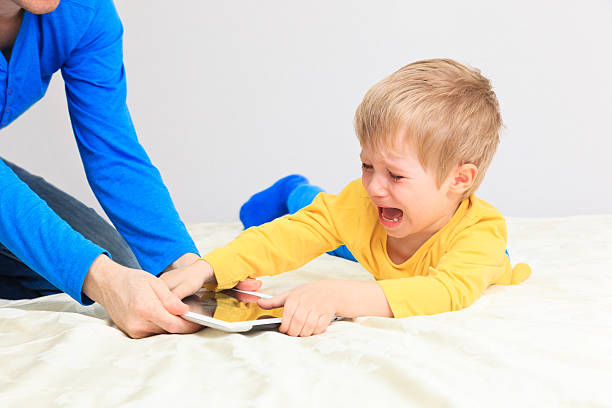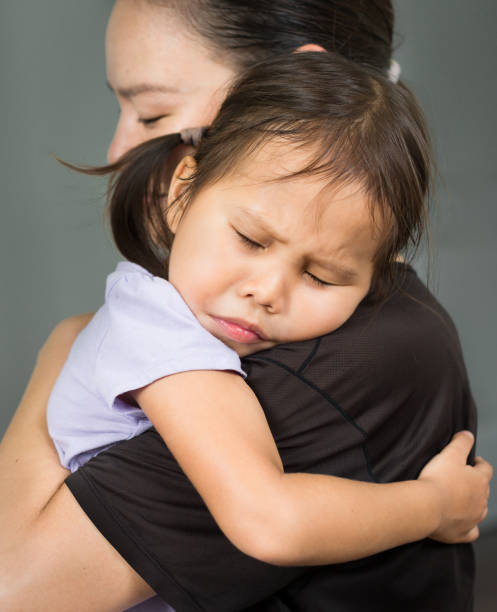Introduction:
Welcome to "Nurturing Independence," a dedicated blog series for parents of children aged 2 to 3 years. This blog series aims to provide valuable insights and practical strategies to help both parents and children navigate the challenges of separation anxiety. We understand that starting daycare or preschool can be an emotionally overwhelming experience for both children and their primary caregivers. That's why we're here to support you through this important stage of your child's development.
In this series, we will explore the various facets of separation anxiety, including clinginess, distress, and resistance that children often exhibit during separations from their primary caregiver. We'll delve into the underlying causes of separation anxiety and how it relates to your child's developmental milestones. Understanding these factors will help us tailor effective coping mechanisms and strategies to ease your child's transition into daycare or preschool.
We believe that building a strong foundation is crucial in nurturing your child's independence. We'll discuss how you can establish a secure attachment with your child, laying the groundwork for a healthy and confident sense of self. We'll also provide guidance on introducing the concept of separation gradually, creating a consistent routine, and fostering a supportive environment that encourages your child's exploration and growth.

Throughout this blog series, we'll offer practical strategies to ease separation anxiety. From gradual exposure to the new environment to establishing reassuring rituals, we'll equip you with the tools you need to navigate this challenging period. We'll explore age-appropriate activities that promote independence and self-soothing, along with effective ways to strengthen trust and communication with teachers and caregivers.
Moreover, we'll delve into the importance of supporting your child's emotional resilience. We'll provide insights on practicing empathy and validation, teaching emotional intelligence and coping skills, and fostering resilience through play and exploration. Additionally, we'll address common challenges you may encounter along the way, such as regression, triggers, and parental guilt, offering guidance and reassurance.
At "Nurturing Independence," we understand that every child is unique, and their journey through separation anxiety may differ. We aim to provide you with a comprehensive range of strategies, allowing you to tailor your approach to suit your child's individual needs. By empowering you with knowledge, understanding, and practical tools, we're confident that you'll be better equipped to support your child through this significant transition and foster their emotional well-being.
So, join us on this insightful journey as we explore the depths of separation anxiety and discover effective ways to cope with clinginess, distress, and resistance during separations from the primary caregiver. Together, let's nurture your child's independence and lay the foundation for a confident and resilient future. Stay tuned for our upcoming blog posts as we delve deeper into the fascinating world of parenting and child development.
I. Understanding Separation Anxiety
Separation anxiety is a common and natural response that many children experience when faced with separations from their primary caregiver. It is essential for parents to have a comprehensive understanding of separation anxiety to effectively support their child through this challenging phase. In this section, we will explore the key aspects of separation anxiety, including its definition, signs and symptoms, and the developmental factors that influence its occurrence.
A. What is Separation Anxiety?
Separation anxiety refers to the distress and unease that children feel when separated from their primary caregiver or when faced with unfamiliar environments. It typically manifests between the ages of 8 months to 2 years, peaking around 1½ to 2 years of age. Understanding the nature of separation anxiety helps parents recognize and respond appropriately to their child's emotional needs.
B. Typical Signs and Symptoms
Children experiencing separation anxiety may exhibit various signs and symptoms, which can vary in intensity and duration. Some common indicators include clinginess, crying, tantrums, refusal to engage with others, and physical complaints such as stomachaches or headaches. It's important to note that these behaviors are temporary and are part of a normal developmental process.
C. Developmental Factors Influencing Separation Anxiety
Several developmental factors contribute to the occurrence of separation anxiety. These include the child's cognitive and emotional development, their attachment to the primary caregiver, and their understanding of object permanence (the realization that objects/people still exist even when they are out of sight). Exploring these factors will help parents gain insights into their child's experience and respond empathetically to their needs.
II. Preparing for the Transition

Preparing for the transition from being exclusively with a primary caregiver to starting daycare or preschool is crucial in minimizing separation anxiety and helping your child adjust to their new environment. In this section, we will outline various strategies and approaches to set the foundation for a smooth transition.
A. Setting the Foundation: Building a Secure Attachment
- Nurturing the bond: Prioritize quality time with your child to strengthen the parent-child relationship. Engage in activities that promote connection, such as reading together, playing, and engaging in daily routines.
- Responsive parenting: Practice sensitive and responsive caregiving, attending to your child's needs promptly. This helps them develop a sense of security and trust in their relationship with you.
B. Introducing the Concept of Separation
- Open communication: Talk to your child about the upcoming changes, using simple and age-appropriate language. Explain what daycare or preschool is, emphasizing the positive aspects like making new friends and engaging in fun activities.
- Books and stories: Read books that discuss starting daycare or preschool to familiarize your child with the concept and what to expect. This can help alleviate their anxieties and provide a sense of familiarity.
C. Creating a Consistent Routine and Environment
- Predictable schedule: Establish a consistent daily routine that includes regular mealtimes, playtime, naptime, and bedtime. A predictable schedule helps children feel secure and gives them a sense of control over their day.
- Familiarize with the environment: If possible, visit the daycare or preschool together with your child before their official start date. Explore the space, meet the teachers or caregivers, and allow your child to become familiar with their new surroundings.
III. Strategies to Ease Separation Anxiety
Navigating separation anxiety requires a thoughtful and gradual approach to help your child develop the necessary coping skills. In this section, we will explore effective strategies to ease separation anxiety during transitions, such as starting daycare or preschool. These strategies focus on gradual exposure, establishing reassuring rituals, encouraging independence and self-soothing, and strengthening trust and communication.
A. Gradual Exposure: Transitioning to Daycare or Preschool
- Exploring the new environment together: Visit the daycare or preschool with your child, allowing them to become familiar with the surroundings, meet the teachers or caregivers, and engage in playtime. Gradually increase the duration of these visits to build comfort and familiarity.
- Gradually increasing separation time: Begin with short periods of separation, gradually extending the duration over time. This gradual approach allows your child to develop trust and confidence in their ability to handle separations.
- Engaging in playdates and social interactions: Arrange playdates with other children who will be attending the same daycare or preschool. This provides an opportunity for your child to develop friendships and become familiar with their peers, promoting a sense of belonging.
B. Establishing Reassuring Rituals
- Creating a goodbye routine: Develop a consistent and comforting goodbye ritual that involves a special phrase, a hug, or a kiss. This routine provides a predictable and reassuring transition for your child during separations.
- Transition objects: Encourage your child to bring a comforting item from home, such as a stuffed animal or a small photo, to provide a sense of security and familiarity during their time away.
- Regular communication and updates: Stay connected with the daycare or preschool staff, requesting updates on your child's activities and well-being. Sharing this information with your child during reunions reinforces their sense of connection and trust.
C. Encouraging Independence and Self-Soothing
- Age-appropriate activities for self-reliance: Foster independence by encouraging your child to engage in age-appropriate tasks, such as picking out clothes or tidying up their toys. This boosts their confidence and enhances their sense of capability.
- Teaching coping mechanisms and self-calming techniques: Introduce calming strategies, such as deep breathing exercises, counting, or using a calming jar, to help your child manage their anxiety during separations.
- Encouraging socialization and group activities: Engage your child in group activities, such as playdates or organized classes, to foster social skills and a sense of belonging within a larger community.
D. Strengthening Trust and Communication
- Active listening and validating feelings: Be attentive and empathetic when your child expresses their fears or anxieties. Validate their feelings, acknowledging that their emotions are valid and understandable.
- Building trust with teachers and caregivers: Develop a positive and trusting relationship with the daycare or preschool staff. Regularly communicate with them, sharing information about your child's needs, preferences, and any relevant concerns.
- Maintaining open lines of communication: Establish clear channels of communication with the daycare or preschool, ensuring you can easily reach out to discuss any issues or updates. This open dialogue fosters a collaborative and supportive approach.
IV. Supporting Emotional Resilience

Supporting your child's emotional resilience is essential in helping them navigate separation anxiety with confidence and adaptability. In this section, we will explore strategies to foster emotional resilience, promote empathy, teach coping skills, and encourage exploration and play.
A. Practicing Empathy and Validation
- Empathetic listening: Take the time to actively listen to your child's concerns and fears. Show empathy by acknowledging and validating their emotions, letting them know that it's okay to feel anxious or sad.
- Labeling emotions: Help your child develop emotional intelligence by labeling and identifying their emotions. Use simple language to describe their feelings, such as "You seem worried" or "I can see that you're feeling sad."
B. Teaching Emotional Intelligence and Coping Skills
- Emotion recognition: Engage in activities that help your child recognize and understand different emotions. Use books, flashcards, or games that depict various facial expressions and discuss the corresponding emotions.
- Problem-solving strategies: Encourage your child to think through solutions to challenging situations. Teach them problem-solving skills, such as brainstorming ideas or seeking help from a trusted adult.
- Relaxation techniques: Introduce age-appropriate relaxation techniques, such as deep breathing exercises or visualization, to help your child calm themselves during moments of anxiety or distress.
C. Fostering Resilience Through Play and Exploration
- Play therapy: Play is a powerful tool for children to express and process their emotions. Engage in imaginative play, role-playing, or puppet play that allows your child to explore and work through separation-related themes.
- Encourage exploration: Support your child's curiosity and sense of adventure. Encourage them to explore new environments, try new activities, and face challenges. Celebrate their achievements and provide reassurance when they encounter setbacks.
V. Troubleshooting Challenges
Throughout the process of coping with separation anxiety, you may encounter various challenges that require your attention and understanding. In this section, we will address common challenges and provide strategies to help you navigate them effectively.
A. Handling Regression and Setbacks
- Understanding regression: It is common for children to exhibit regression during times of stress or change. Be patient and supportive if your child temporarily reverts to previous behaviors, such as bedwetting or clinginess.
- Re-establish routines: Reinstate consistent routines and rituals that provide a sense of security for your child. This helps them regain their confidence and stability.
B. Dealing with Separation Anxiety Triggers
- Identify triggers: Pay attention to specific situations or events that trigger your child's separation anxiety. This could include transitions, certain people, or specific environments. Recognizing triggers allows you to develop targeted strategies to alleviate anxiety in those situations.
- Gradual exposure and desensitization: Gradually expose your child to their triggers in a controlled and supportive manner. Start with small steps and gradually increase exposure over time while providing reassurance and support.
C. Addressing Parental Guilt and Anxiety
- Self-care: Take care of your own well-being, as your emotional state can impact your child. Prioritize self-care activities that help you relax and recharge, reducing feelings of guilt and anxiety.
- Seek support: Reach out to other parents, friends, or support groups who may be experiencing similar challenges. Sharing your feelings and seeking guidance can provide valuable support and reassurance.
Conclusion:
In conclusion, helping children cope with separation anxiety during transitions, such as starting daycare or preschool, is a significant challenge for both parents and children. However, armed with knowledge, understanding, and effective strategies, you can navigate this phase with confidence and support your child's emotional growth and independence. Throughout this blog series, we have explored various aspects of separation anxiety, from understanding its definition and typical signs to exploring strategies to ease the anxiety and promote resilience. We have emphasized the importance of setting a strong foundation through secure attachment, gradually introducing the concept of separation, and creating a consistent routine and environment.

We have provided practical strategies such as gradual exposure to the new environment, establishing reassuring rituals, encouraging independence and self-soothing, and strengthening trust and communication. These strategies aim to empower your child to manage separation anxiety in a healthy and adaptive way. Additionally, we have highlighted the significance of supporting your child's emotional resilience. By practicing empathy, teaching emotional intelligence and coping skills, and fostering exploration and play, you can equip your child with the tools they need to navigate separations and thrive in new environments.
Remember, every child is unique, and it's essential to adapt these strategies to suit your child's individual needs. Trust your instincts as a parent, be patient, and provide consistent support. You are your child's most important source of love and understanding during this journey.

